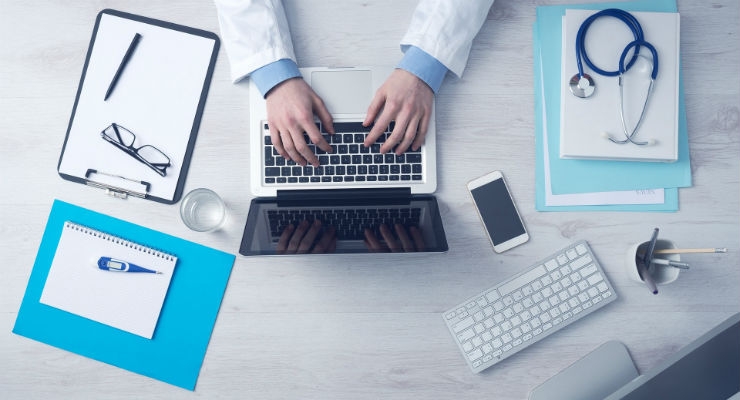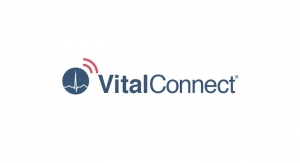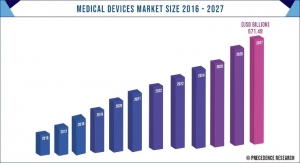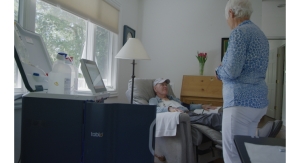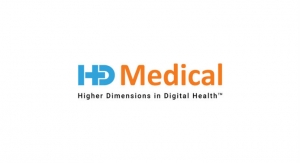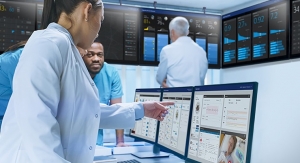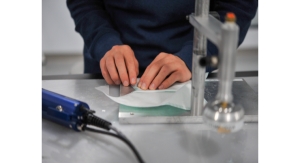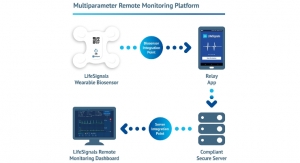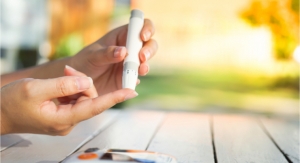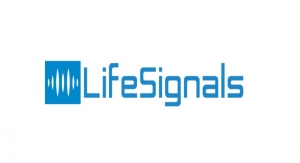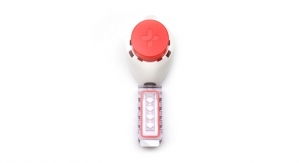Waqaas Al-Siddiq, Founder and CEO, Biotricity09.13.17
As the world becomes more digitized, it is only natural this trend would permeate the way we practice and deliver healthcare. In its “Physician Trends 2016 Report,” Jackson Healthcare projects the number of patients using telemedicine services will increase from less than 350,000 in 2013 to 7 million in 2018. This exponential change in healthcare delivery is precipitated by the efficiency and savings associated with telemedicine. Telemedicine allows healthcare providers to remotely diagnose and treat patients using telecommunications as an alternative to in-person visits, substantially reducing costs and in-facility congestion. Providers can also consult with each other through the same technology, profiting from specialized knowledge and additional resources to boost the quality of care.
Today, the advent of telemedicine couldn’t be more critical as chronic diseases and conditions are now responsible for nearly 7 out of 10 deaths among Americans each year. This is especially true for rural America where 60 percent of Americans have reduced access to broadband and physicians, and a higher chance of getting a chronic disease, compared to only 5 percent of urban residents. Chronic disease is a growing problem, and remote areas with inadequate access to healthcare are suffering the most. While telemedicine encompasses a variety of healthcare tools, including concierge services such as e-consultations and e-visits, remote patient monitoring (RPM) technology contains the greatest opportunity for tackling the chronic disease epidemic, especially in remote areas. RPM technology that is convenient to use empowers actionable feedback, improves the quality of care, and increases remote patient healthcare access, offering a viable new approach to the diagnosis and management of chronic diseases and conditions.
Limits of Today’s Telemedicine
Despite its benefits, current telemedicine solutions are still limited in scope and application. According to new research by HIMSS Analytics, about 71 percent of healthcare providers in the United States have utilized telemedicine tools to connect with patients in 2017; the majority of these tools were limited to a diagnosis by teleconference. Without access to real-time, clinical-grade data, a physician is unable to have complete insight into the patient’s condition. The lack of data available via teleconference renders it even less effective when attempting to diagnose or consult on the management of a chronic health condition, such as heart disease. In a 2015 article published in The American Journal of Medicine, researchers discussed how they could combat the poor delivery of chronic disease treatment by modifying their delivery model to include team-based care in concert with patient-centered technologies, such as wearable devices that are designed to enact lifestyle changes in chronic disease patients.

Waqaas Al-Siddiq is Biotricity's founder and CEO.
A recent study conducted by the American College of Allergy, Asthma and Immunology (ACAAI) found that over the course of six months, a telemedicine approach incorporating remote patient monitoring was just as effective as an in-person visit in managing asthma outcomes in children. The telemedicine solution incorporated real-time use of a remote presence solution (RPS) equipped with a digital stethoscope, otoscope, and high-resolution camera, which allowed physicians to supplement video appointments with access to clinical-grade patient data. In this way, remote patient monitoring can enhance the experience of the virtual “visit” afforded by teleconferences.
Convenience While Empowering Actionable Feedback
As part of the over-all telemedicine “tool-kit,” RPM devices that are small and easy to use at home are necessary components for managing chronic disease. Earlier this year, Abbott Laboratories Inc. released data from a study showing that patients who scan more frequently using the company’s glucose monitoring system, spent less time in hypoglycemia or hyperglycemia while having improved average glucose levels. The company’s FreeStyle Libre system was designed with usability in mind, consisting of a small, round sensor worn on the back of the upper arm that measures glucose every minute in interstitial fluid through a small filament that is inserted just under the skin and held in place with a small adhesive pad. A reader is scanned over the sensor to get a glucose result in less than one second, and it is completely painless. The device proved successful because it offered real-time, continuous glucose monitoring that was convenient and hassle-free for patients to use, while empowering them with actionable feedback. In fact, diabetics cite that the biggest obstacle preventing them from more frequent glucose monitoring is the pain and hassle associated with routine finger sticks.
Medical-grade wearables that are designed to address various chronic conditions could offer the same advantages of convenience and actionable feedback that exists for diabetics. Just like Freestyle Libre, medical wearables could generate more accurate patient diagnoses, because the biometric readings recorded would reflect real-life conditions as opposed to data measured in controlled settings, such as hospitals.
Improving Quality of Care Without Leaving Home
Telemedicine healthcare incorporating RPM technology has been shown to improve the quality of patient care and overall satisfaction. The Veterans Health Administration (VHA) introduced its Care Coordination/Home Telehealth (CCHT) program in 2003, which uses remote monitoring devices in veterans' homes to communicate chronic condition statuses and to record and transmit biometric data for remote monitoring by healthcare providers. The CCHT program has demonstrated successful outcomes citing that through the end of 2010, veterans reported patient satisfaction levels greater than 85 percent for the telehealth services, and a significant reduction in the length of hospital stays. In 2006, PartnersHealthcare in Boston implemented a telemonitoring and education program for patients with heart failure called The Connected Cardiac Care Program (CCCP). A 2015 retrospective evaluation of CCCP with 348 heart failure patients showed that the program was associated with significantly lower hospitalization rates by up to 90 days and significantly lower mortality rates over 120 days.
Greater Remote Patient Healthcare Access
Remote patient monitoring, as part of the telemedicine health solution, can facilitate greater access to healthcare among rural and underserved communities. An electronic intensive care unit (e-ICU) in rural Alaska is helping healthcare professionals located in urban areas reach patients at three other hospitals in remote locations. Electronic intensive care units allow healthcare providers to care for patients in many hospitals at once. They utilize remote patient monitoring technology, two-way cameras, video monitors, microphones, and smart alarms all connected by high speed data lines. In fact, the American College of Chest Physicians (ACCP), issued a press release detailing a study presented at their annual meeting, which found that e-ICUs prevent deaths by helping doctors follow best clinical practices, and cut two days off the average length of an ICU stay.
A Hopeful Future
Telemedicine is gaining traction with each passing day. The U.S. House of Representatives and Senate are currently considering two new bills (MTPA and CONNECT) that look at reducing the restrictions that the Centers for Medicare & Medicaid Services (CMS) currently has on telemedicine coverage. If passed, the two bills will expand the list of providers eligible to provide telehealth services, remove geographic barriers to telehealth care, and expand the services eligible to be offered via telehealth. For patients living in remote areas, this translates to convenient and timely access to healthcare. For healthcare providers, incorporating telehealth services with RPM technology can offer improved patient outcomes, reduced costs and congestion, and increased efficiency. As technology advances to offer more accurate and streamlined solutions, and broadband is extended into remote areas, RPM technology such as medical-grade wearables will become the next-generation telemedicine solution for chronic disease diagnosis and management.
Waqaas Al-Siddiq is founder and CEO of Biotricity, a biometric remote monitoring solutions company. He is a serial entrepreneur, a former investment advisor, and expert in wireless communication technology. He has vast experience through executive roles within start-ups, mid-sized companies, and non-profits. For more information, visit https://www.biotricity.com.
Today, the advent of telemedicine couldn’t be more critical as chronic diseases and conditions are now responsible for nearly 7 out of 10 deaths among Americans each year. This is especially true for rural America where 60 percent of Americans have reduced access to broadband and physicians, and a higher chance of getting a chronic disease, compared to only 5 percent of urban residents. Chronic disease is a growing problem, and remote areas with inadequate access to healthcare are suffering the most. While telemedicine encompasses a variety of healthcare tools, including concierge services such as e-consultations and e-visits, remote patient monitoring (RPM) technology contains the greatest opportunity for tackling the chronic disease epidemic, especially in remote areas. RPM technology that is convenient to use empowers actionable feedback, improves the quality of care, and increases remote patient healthcare access, offering a viable new approach to the diagnosis and management of chronic diseases and conditions.
Limits of Today’s Telemedicine
Despite its benefits, current telemedicine solutions are still limited in scope and application. According to new research by HIMSS Analytics, about 71 percent of healthcare providers in the United States have utilized telemedicine tools to connect with patients in 2017; the majority of these tools were limited to a diagnosis by teleconference. Without access to real-time, clinical-grade data, a physician is unable to have complete insight into the patient’s condition. The lack of data available via teleconference renders it even less effective when attempting to diagnose or consult on the management of a chronic health condition, such as heart disease. In a 2015 article published in The American Journal of Medicine, researchers discussed how they could combat the poor delivery of chronic disease treatment by modifying their delivery model to include team-based care in concert with patient-centered technologies, such as wearable devices that are designed to enact lifestyle changes in chronic disease patients.

Waqaas Al-Siddiq is Biotricity's founder and CEO.
Convenience While Empowering Actionable Feedback
As part of the over-all telemedicine “tool-kit,” RPM devices that are small and easy to use at home are necessary components for managing chronic disease. Earlier this year, Abbott Laboratories Inc. released data from a study showing that patients who scan more frequently using the company’s glucose monitoring system, spent less time in hypoglycemia or hyperglycemia while having improved average glucose levels. The company’s FreeStyle Libre system was designed with usability in mind, consisting of a small, round sensor worn on the back of the upper arm that measures glucose every minute in interstitial fluid through a small filament that is inserted just under the skin and held in place with a small adhesive pad. A reader is scanned over the sensor to get a glucose result in less than one second, and it is completely painless. The device proved successful because it offered real-time, continuous glucose monitoring that was convenient and hassle-free for patients to use, while empowering them with actionable feedback. In fact, diabetics cite that the biggest obstacle preventing them from more frequent glucose monitoring is the pain and hassle associated with routine finger sticks.
Medical-grade wearables that are designed to address various chronic conditions could offer the same advantages of convenience and actionable feedback that exists for diabetics. Just like Freestyle Libre, medical wearables could generate more accurate patient diagnoses, because the biometric readings recorded would reflect real-life conditions as opposed to data measured in controlled settings, such as hospitals.
Improving Quality of Care Without Leaving Home
Telemedicine healthcare incorporating RPM technology has been shown to improve the quality of patient care and overall satisfaction. The Veterans Health Administration (VHA) introduced its Care Coordination/Home Telehealth (CCHT) program in 2003, which uses remote monitoring devices in veterans' homes to communicate chronic condition statuses and to record and transmit biometric data for remote monitoring by healthcare providers. The CCHT program has demonstrated successful outcomes citing that through the end of 2010, veterans reported patient satisfaction levels greater than 85 percent for the telehealth services, and a significant reduction in the length of hospital stays. In 2006, PartnersHealthcare in Boston implemented a telemonitoring and education program for patients with heart failure called The Connected Cardiac Care Program (CCCP). A 2015 retrospective evaluation of CCCP with 348 heart failure patients showed that the program was associated with significantly lower hospitalization rates by up to 90 days and significantly lower mortality rates over 120 days.
Greater Remote Patient Healthcare Access
Remote patient monitoring, as part of the telemedicine health solution, can facilitate greater access to healthcare among rural and underserved communities. An electronic intensive care unit (e-ICU) in rural Alaska is helping healthcare professionals located in urban areas reach patients at three other hospitals in remote locations. Electronic intensive care units allow healthcare providers to care for patients in many hospitals at once. They utilize remote patient monitoring technology, two-way cameras, video monitors, microphones, and smart alarms all connected by high speed data lines. In fact, the American College of Chest Physicians (ACCP), issued a press release detailing a study presented at their annual meeting, which found that e-ICUs prevent deaths by helping doctors follow best clinical practices, and cut two days off the average length of an ICU stay.
A Hopeful Future
Telemedicine is gaining traction with each passing day. The U.S. House of Representatives and Senate are currently considering two new bills (MTPA and CONNECT) that look at reducing the restrictions that the Centers for Medicare & Medicaid Services (CMS) currently has on telemedicine coverage. If passed, the two bills will expand the list of providers eligible to provide telehealth services, remove geographic barriers to telehealth care, and expand the services eligible to be offered via telehealth. For patients living in remote areas, this translates to convenient and timely access to healthcare. For healthcare providers, incorporating telehealth services with RPM technology can offer improved patient outcomes, reduced costs and congestion, and increased efficiency. As technology advances to offer more accurate and streamlined solutions, and broadband is extended into remote areas, RPM technology such as medical-grade wearables will become the next-generation telemedicine solution for chronic disease diagnosis and management.
Waqaas Al-Siddiq is founder and CEO of Biotricity, a biometric remote monitoring solutions company. He is a serial entrepreneur, a former investment advisor, and expert in wireless communication technology. He has vast experience through executive roles within start-ups, mid-sized companies, and non-profits. For more information, visit https://www.biotricity.com.

